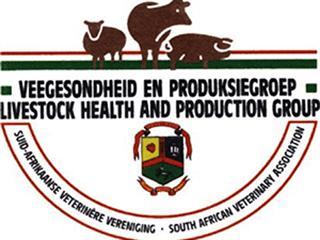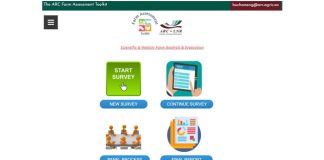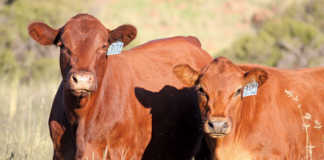
On some farms worm resistance to anthelmintic groups led to mortalities. After the first frost wireworm infestations will decline on pastures. Most farmers treat their animals during this period, and it’s important to consult your vet to establish which drugs are still effective on your farm.
- As animals are put to grazing in vleis during the winter months they’re sure to pick up liver and conical fluke infestations, and reports of outbreaks have already been received. Clinical signs of liver fluke are anaemia and bottle jaw; the most obvious sign of conical fluke is projectile diarrhoea. The active ingredient controlling early immature liver fluke is triclabendazole.
- Increased numbers of blue ticks were reported in many areas and there were increased outbreaks of Asiatic and African red water.
Farmers who have been controlling ticks with long-acting macrocyclic lactones and fluazurone had less problems. But these drugs must be used sparingly as selection for resistant blue ticks could easily occur.
- Anaplasmosis outbreaks were reported throughout the country. This disease is transmitted by biting flies and blue ticks. A vaccine is available and farmers should immunise their animals against this disease.
- Heartwater is spreading due to infected bont ticks passed on by game. Quarantine cattle brought from heartwater areas and treat them with acaricides before you introduce them into the herd. Ticks can even be introduced onto a farm with hay.
- The first cases of Karoo paralysis were reported and Dr Roland Larson says Graaff-Reinet had the biggest outbreak in 18 years.
- Cases of lumpyskin disease were reported from Mpumalanga, KwaZulu-Natal, the North West, Free State and Western Cape. Farmers should now plan to vaccinate their animals before the next rainy season as this disease is transmitted by biting insects.
- Three-day stiff sickness cases were reported from Gauteng, Limpopo, the North West and Free State. Bulls and dairy cattle should be vaccinated before the next rainy season.
- Venereal diseases such as trichomonosis and vibriosis are still reported every month and cause huge economic losses to cattle farmers. Bulls should be tested for these diseases and biosecurity measures put in place to prevent clean herds from becoming infected.
- When it comes to pizzle disease (peestersiekte), Dr Ian Vorster of Upington advises the following: rams and ewes that are free of pizzle rot on an infected farm should be given a red tag; they’re probably genetically resistant and should be used for breeding sheep resistant to this disease.
This disease should be discussed openly and not hidden. Remember it can be transmitted up to 1km by flies (wind), and hygiene (disinfection of hands) is very important when examining sheep for pizzle disease.
- The following bacterial diseases were reported: swelled head, blackleg, pulpy kidney, redgut, bloodgut, tetanus, botulism, Brucella ovis, Escherichia coli, salmonellosis, Johnes disease and enzootic abortion.
- Contagious abortion is spreading, with new cases reported every month. Stringent biosecurity measures supported by vaccination should be in place to prevent herds from becoming infected.
- Bovine malignant catarrh (snotsiekte) was reported in Mpumalanga, Gauteng, Limpopo, North West, KZN, the Free State and the Eastern Cape. Cattle farmers should ensure that cattle and wildebeest are kept as far away from each other as possible.
- The following poisonings were reported: urea, tulip, Lantana, Senecio, Ink-berry, prussic acid, acidosis, chinkerenchee, lead, copper toxicity, Solanum, geeldikkop, ganskweek, ergot and Phostoxin.
- Numerous mortalities occurred in horses due to African Horse Sickness in spite of animals been vaccinated.
Feedlot report
Cattle
- Increased prevalence of pneumonia at this time of the year is normal in feedlots. The months April to June usually have the highest incidence of respiratory diseases in cattle. Foul weather accompanied by cold caused mortalities in under-weight calves with no fat reserves.
- The tick population increased suddenly after good rains and a lot of deaths occurred due to anaplasmosis.
- There were numerous deaths due to toxic plants, especially in younger animals. Such cases aren’t normally seen at the end of summer, but the late summer rain after the drought saw toxic plants such as slangkop sprouting. Scarcity of grazing then led to these plants being eaten.
- Numerous cases of blackleg and botulism occurred. The feeding of chicken litter during drought periods and winter months usually leads to the latter. Cattle must receive at least two doses of botulism vaccine, two to three weeks apart, before starting to feed animals with chicken litter. One vaccination is not sufficient.
- A few cases of heartwater occurred in new arrival calves in feedlots and backgrounding farms.
- Deaths among C-Grade cattle in poor condition occurred after long transportation.
Sheep
- Relatively few problems with pneumonia but still some losses due to the poor condition of animals arriving at feedlots, as well as adaptation problems.
- One group of sheep arrived at a feedlot with a severe bankrupt worm infestation and started dying a few days after processing due to secondary E.coli and Salmonella infections.
- Wireworm infestation is rife, but no cases of resistance to anthelmintics were reported.
Click on the link for a more detailed report – Disease Trends Map













